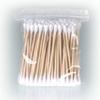bernm

Joined: Sep 25, 2017
Posts: 8
|

Posted on Apr 28 2018 03:10 AM
Hi everyone,
I'm wondering if there's a simple mod that would let me run my SurfyTrem a little slower than the default minimum speed that comes with the stock kit? Would changing the speed pot value do that?
To clarify, I find myself in the lower end of the dials for both controls most of the time, though more so for the speed (often I run it on minimum). I'm happy to sacrifice some of the upper end of the existing range (for both controls actually), and it's be great to be able to dial them in a bit more finely too.
Happy to hear any suggestions. It's a great pedal, and I can use it as is. But if it's at all possible to go slower, that would be fantastic. And if it's as simple as substituting another pot, I'd also be happy to hear which value/type would give finer control over the depth too.
Thanks!
|
Tqi

Joined: Dec 07, 2014
Posts: 1222

|

Posted on Apr 28 2018 04:34 AM
-
Last edited: Feb 02, 2024 13:54:44
|
j_flanders

Joined: Jun 28, 2017
Posts: 162
|

Posted on Apr 28 2018 04:37 AM
|
bernm

Joined: Sep 25, 2017
Posts: 8
|

Posted on Apr 28 2018 03:56 PM
|
bernm

Joined: Sep 25, 2017
Posts: 8
|

Posted on Apr 28 2018 04:03 PM
j_flanders wrote:
I added an extra pot to dial in slower speeds:
https://surfguitar101.com/forums/topic/28106/?page=6#p402798
Thanks! I had a read of your linked post, and I'd like to try the extra pot approach. Would I be able to ask for a little more info please? Since there are 3 lugs, I am not sure how to wire in series (I understand with 2 lugs, but not 3). Also, the speed pot in the kit is a 100K Rev Lin - am I reading correctly that you used a 250K linear (not reverse) pot for the "extra slower" speeds?
(I should clarify - based on a reply above - that my SurfyTrem is the kit version and so I'm fine with opening it up an having a go at this mod.)
Anyway, I'm glad hear that there's a way to move ahead with this, and I'm sure I'll enjoy the trem even more once I can access those lower speeds.
Kind regards,
Bern
Last edited: Apr 28, 2018 16:04:35
|
j_flanders

Joined: Jun 28, 2017
Posts: 162
|

Posted on Apr 28 2018 05:44 PM
I soldered a 1M linear pot in series to one of the outside lugs of the speed pot. I can't remember which one. You have a 50% chance of doing it right the first time.:)

I choose a 1M linear pot because you need exponentially more resistance to go slower and slower. As posted previously:
0k extra : 210 bpm (slowest stock)
55k extra : 196 bpm
155k extra : 182 bpm
You'll see an additional range of 14bpm (210-196) with 55k ohm extra, but you need almost twice (100k ohm) for the same additional range of 14bpm (196-182).
You will probably need an extra 200k Ohm for the next additional 14 bpm. Hence my choice for a 1M pot.
Last edited: Apr 28, 2018 17:58:57
|
RomanS

Joined: Jun 15, 2014
Posts: 6
|

Posted on May 26 2018 11:51 AM
Finally completed my SurfyTrem kit build - managed to fit it inside a 1590 B type case; that took some planning, careful drilling, and lots of hot glue to keep components from moving & shorting out...


|
Gilette

Joined: May 04, 2014
Posts: 734



|

Posted on May 26 2018 12:21 PM
Cool! That would have been quite a puzzle! Looking forward to the next one with battery power. 
|
Tqi

Joined: Dec 07, 2014
Posts: 1222

|

Posted on May 26 2018 06:43 PM
-
Last edited: Feb 02, 2024 14:00:14
|
RomanS

Joined: Jun 15, 2014
Posts: 6
|

Posted on May 27 2018 05:49 PM
Already got plenty of shrink wrap, thanks...
|
Tqi

Joined: Dec 07, 2014
Posts: 1222

|

Posted on May 28 2018 05:32 AM
-
Last edited: Feb 02, 2024 14:01:09
|
RomanS

Joined: Jun 15, 2014
Posts: 6
|

Posted on May 29 2018 02:31 AM
I used it mainly to keep the PCB from moving around in the case (not enough room for stand-off clips), and to keep the LED from falling out of its hole (didn't have any LED sockets at home).
And while I was at it, I put some on the tabs of the jacks, but more for keeping the board from moving, rather than for isolation - shrink wrap wouldn't have helped with that...
|
Tqi

Joined: Dec 07, 2014
Posts: 1222

|

Posted on May 29 2018 11:22 AM
-
Last edited: Feb 02, 2024 14:01:15
|
Snufkino

Joined: Nov 03, 2009
Posts: 228

|

Posted on Jun 04 2018 12:24 AM
Pretty sure my tremolo quest is over now I've had this thing kicking around on my board for a while. Nice and simple and does exactly what I need. I'm running it at 12v. Layout is a little goofy, so I might rehouse it in a bigger enclosure and put a foot switch in place of the toggle.

Last edited: Jun 04, 2018 00:49:04
|
Tailrocker

Joined: May 09, 2018
Posts: 63
Morgantown, WV

|

Posted on Jun 05 2018 09:57 AM
Just got mine in the mail. I see I have a lot to read here.
|
Lechero

Joined: Jun 15, 2018
Posts: 2
|

Posted on Jun 15 2018 05:31 PM
j_flanders wrote:
I soldered a 1M linear pot in series to one of the outside lugs of the speed pot. I can't remember which one. You have a 50% chance of doing it right the first time.:)

Hey I'm planning on building my kit this weekend with a 3PDT switch, but while looking at your schematic I was wondering why didn't you choose to use the switch GND and pin at the top of the board between the power in and the output section? instead of interrupting the circuit at the LED
Last edited: Jun 15, 2018 17:33:14
|
otaznik

Joined: Dec 27, 2013
Posts: 10

|

Posted on Jun 16 2018 12:41 AM
Lechero wrote:
Hey I'm planning on building my kit this weekend with a 3PDT switch
If I can chime in...
I made a pedal with true bypass because I have a playground with a lot of pedals and I want to be able to take out any effect completely or even disconnect DC. Then I discovered that it was designed to give you that vintage signal change even when not used which also means volume drop (this does not matter).
So I did this:
true bypass 3PDT:
in return (footswitch gnd =ON)
send out (footswitch)
X Y (disconnected =OFF)
DPDT mode switch (original / true bypass):
in return (always through circuit)
X Y
gnd in (SEND to GND, bypass)
So in addition to 3PDT push switch I have another DPDT slide switch on the side which makes the 3PDT true bypass or lets me use it as designed.
|
j_flanders

Joined: Jun 28, 2017
Posts: 162
|

Posted on Jun 16 2018 05:11 AM
Lechero wrote:
Hey I'm planning on building my kit this weekend with a 3PDT switch, but while looking at your schematic I was wondering why didn't you choose to use the switch GND and pin at the top of the board between the power in and the output section? instead of interrupting the circuit at the LED
I drew that schematic before I had the kit. I didn't know if the led would stay on/blinking if you bypassed the effect because the led is connected to the oscillator.
You can read about my questions and Björns answers over here in the other SurfyTrem thread:
https://surfguitar101.com/forums/topic/28106/?page=6#p401443
IIRC I wired my other Surfy Trem using that GND switch connection.
@otaznik That sounds like a nice solution. I might try that on mine.
Last edited: Jun 16, 2018 05:14:12
|
bjoish

Joined: Jul 06, 2010
Posts: 592
Stockholm



|

Posted on Jun 16 2018 07:30 AM
Yes, there are a lot of options
|
Lechero

Joined: Jun 15, 2018
Posts: 2
|

Posted on Jun 19 2018 05:48 PM
otaznik wrote:
I made a pedal with true bypass ... that vintage signal change even when not used which also means volume drop (this does not matter).
So I did this:
true bypass 3PDT:
in return (footswitch gnd =ON)
send out (footswitch)
X Y (disconnected =OFF)
DPDT mode switch (original / true bypass):
in return (always through circuit)
X Y
gnd in (SEND to GND, bypass)
So in addition to 3PDT push switch I have another DPDT slide switch on the side which makes the 3PDT true bypass or lets me use it as designed.
Oh my gosh! this is so clever...
I sort of understand the conceptual idea, although I'm not absolutely sure I understand your diagram, so is it like this:
on the footswitch 3PDT:
in <pin1> return <pin2> (footswitch gnd =ON)<pin3>
send <pin4> out <pin5> (footswitch) <pin6>
X <pin7> Y <pin8> (disconnected =OFF) <pin9 ¿nothing?>
on the additional mode switch (original / true bypass):
in return (original mode)
X <from 3pdt pin7> Y <to 3pdt pin8>
gnd in (true bypass mode)
Last edited: Jun 19, 2018 17:56:12
|




































